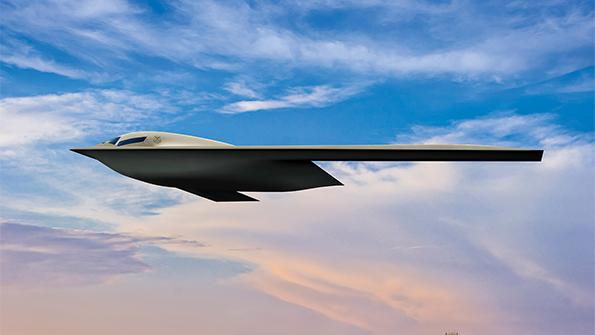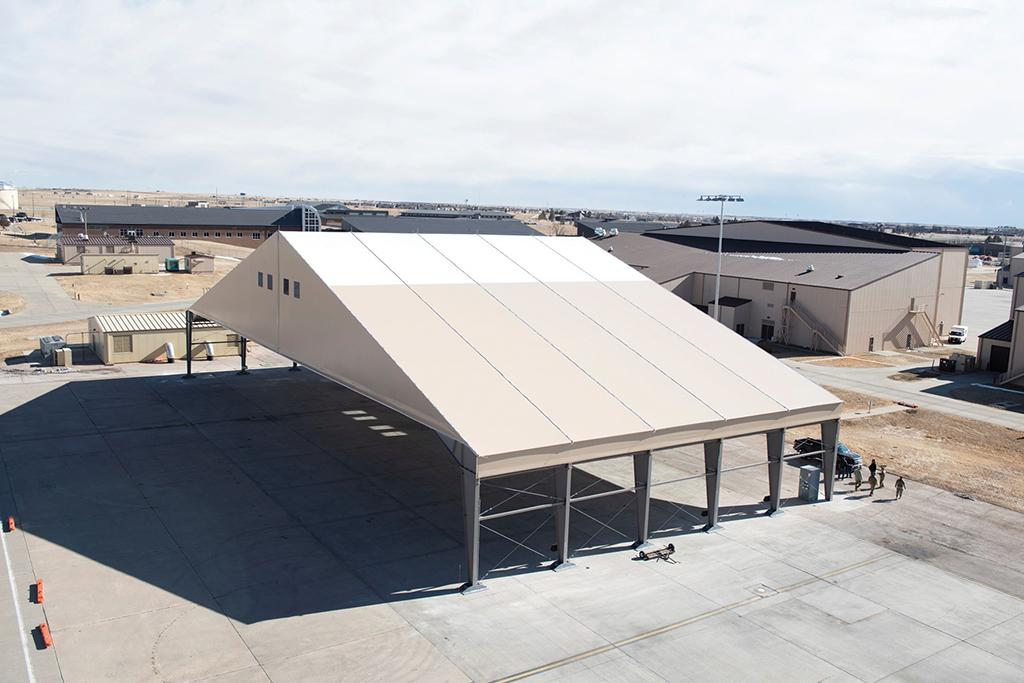
To paraphrase Charles Dickens, the best of times and the worst of times lie ahead in 2022 for the U.S. Air Force bomber fleet.
Over the next 12 months, the Air Force is expected to roll out—and perhaps even fly—the B-21 Raider, the first new stealth bomber in 22 years to roll off Northrop Grumman’s final assembly line at Plant 42 in Palmdale, California. At the same time, Boeing has started a 17-year process to upgrade 76 B-52Hs with Rolls-Royce F136 high-bypass turbofans and other improvements.
- Faster U.S. bombers retirements are likely
- $1 billion B-21 base construction begins
The current good news for the bomber fleet masks the long-term reality: The bomber fleet is shrinking. Seventeen Rockwell B-1Bs joined the retirement roster in 2021, bringing the overall bomber fleet down to 147 aircraft and continuing a long trend. Moreover, top Air Force officials have warned that the pace of B-1B and Northrop B-2 retirements could accelerate as operational B-21s become available in 3-4 years, resulting in an even smaller overall fleet through the end of the decade.
The size and capability of the U.S. fleet is evolving, as the popularity of large bombers grows globally. In Russia, the Prospective Aviation Complex for Long-Range Aviation (PAK DA) aims to deploy the first operational bomber, nicknamed “Envoy,” in 2028. China plans to field the Xian H-20 bomber “sometime in the next decade,” according to the Pentagon’s 2021 report to Congress on Chinese military capabilities. The H-20 should feature a range of at least 8,500 km (5,282 mi.) and payload capacity of at least 10 metric tons, including nuclear weapons, the report says.
But the stage is set for the B-21 to see daylight first. Since production was begun on the first test aircraft in 2019, five B-21s are now at some stage of final assembly in Palmdale. A public rollout event from Northrop’s Building 401 assembly bay is expected in the first half of 2022, and the first flight of the new bomber could follow by the end of the year.
Further details about the B-21 schedule remain secret, but several clues in budget documents and other public statements provide a clear view of what to expect, assuming no technical or production glitches emerge as flight testing begins.
In May, the Air Force requested $108 million for advanced procurement funding of the first series-production B-21s in the fiscal 2022 budget. Aircraft deliveries typically follow three years after advanced procurement funding is awarded, suggesting a time frame between late 2024 and 2025. That timing generally tracks with construction plans at Ellsworth AFB, South Dakota, the planned first main operating base. A $1 billion construction program to support B-21 operations at Ellsworth is expected to be completed between 2026 and 2031, according to a Nov. 22 report by the Air Force Civil Engineer Center.

Although the program of record calls for buying a “minimum of 100” B-21s to replace the B-2 and B-1B fleets, the Air Force’s preferred number may be 50% higher. A fleet of 149 B-21s and 76 reengined B-52s would fulfill the Air Force Global Strike Command’s “preferred” complement of 225 bombers.
In the controversial 2018 Bomber Vector strategy, then Air Force Chief of Staff Gen. David Goldfein called for retirement of the B-2 stealth fleet to start in the 2030s, giving Northrop several years to ramp up B-21 production. But U.S. defense spending has flattened since 2018, putting pressure on all of the armed services to finance rising modernization costs by retiring existing capabilities more quickly. The bomber fleet has not been immune to those budget pressures.
In 2025 or 2026, the Air Force plans to be operating four different types of fielded bombers. “That is not affordable,” Lt. Gen. David Nahom, the deputy chief of staff for plans and programs, said last July during a Mitchell Institute for Aerospace Studies event. “The B-1 and B-2, as phenomenal as they are, we’ve got to get those out of service as the B-21 comes on, and we get ourselves to that two-bomber fleet, which is a B-21 and a modernized B-52.”
Nahom’s comments may imply a shift in thinking under the leadership of Gen. Charles Brown, who replaced Goldfein as chief of staff in 2020. Instead of waiting until the early 2030s to start retiring B-2s and more B-1Bs, the divestment plans may have accelerated to as early as 2026 or 2027 as operational B-21s arrive at Ellsworth. The details may be revealed in February when the Biden administration releases its first long-term defense spending plan, which covers fiscal 2023-27.
For his part, Brown’s slogan—“accelerate, change or lose”—popularizes the concept of divesting existing capabilities that are no longer needed as quickly as possible, with the savings applied to investing in new platforms that have a defined role in combat against a peer-level enemy after 2030. The concept, however, has had a mixed reception on Capitol Hill. Lawmakers have allowed the Air Force to retire B-1Bs and portions of other fleets but have pushed back against proposals to retire or end production of other aircraft such as tankers and some unmanned aircraft systems.

The Air Force’s divestment focus also puts pressure on the B-21 program to stay on schedule and deliver a relatively mature, operational aircraft in the mid-2020s. Some past examples raise troubling questions, however. Northrop needed 16 years after contract award to achieve initial operational capability (IOC) on the B-2. It took Lockheed 14 years to reach IOC with the F-22 and F-35B. If the B-21 follows the same schedule, the program would not achieve IOC until 2029-31.
However, the B-21 may not represent the same generational leap as the B-2 or F-22. The B-21 has a planform similar to the B-2’s, albeit with a modified trailing edge and new engine inlets. The list of known suppliers for the B-21 indicates the bomber would have a high degree of commonality with the most advanced subsystems on the F-35, including the engines (Pratt & Whitney), radar (Northrop) and possibly the electronic warfare suite (BAE Systems). If the technology for the B-21 is largely already proven, its development may more closely resemble that of the Boeing F/A-18E/F Super Hornet, which required only seven years after contract award to achieve IOC.
The B-21 program’s secretive status allows little opportunity for public scrutiny, but Air Force and industry officials insist it is making good progress. As a marker of its relative maturity, Northrop executives have said the first test aircraft will be equipped with major subsystems, such as the radar, on the first flight. By contrast, the F-22 and F-35 test fleet flew for four years before the radar was ready to be activated onboard.
“[The B-21] is going to be a night-and-day difference [from] the B-2 or the F-35,” said Will Roper, then-assistant secretary of the Air Force for acquisition, technology and logistics, in January 2021. “We’re not getting something experimental. We expect to get a representation of the full production [aircraft] to first flight. So after first flight, we expect to transition smoothly into production and to scale, very quickly, from low-rate to full-rate [production].”






Comments